 |
 |
 |
| |
Global HCV Burden Greater in MSM, Especially HIV+ Men: Meta-Analysis
|
| |
| |
AIDS 2020: 23rd International AIDS Conference Virtual, July 6-10, 2020
Mark Mascolini
Meta-analysis consolidated findings from scores of individual studies indicating that men who have sex with men (MSM), especially HIV-positive MSM, carry a higher HCV burden than the general population [1]. HIV incidence (the new-infection rate) is also high in HIV-negative MSM using HIV preexposure prophylaxis (PrEP).
Researchers from the University of New South Wales and the World Health Organization (WHO) collaborated to perform a systematic review and meta-analysis focused on MSM and aiming to estimate HCV prevalence (including prevalence versus the general population) and HCV incidence. The review considered literature published between January 2000 and October 2019 and listed in Medline, Embase, or conference proceedings.
The analysis focused on 196 peer-reviewed articles. Global HCV prevalence stood at 6.3% (95% confidence interval [CI] 5.2 to 7.6) in MSM with HIV and 1.4% (95% CI 0.9 to 2.1) in HIV-negative MSM. In Europe, the Americas, and the Western Pacific, which contributed the most data to this analysis, respective HCV prevalence rates in MSM with HIV versus without HIV were 5.6% versus 0.6%, 9.4% versus 1.7%, and 6.3% versus 1.4%. Confidence intervals just barely overlapped for the HIV+/HIV- comparison in the Western Pacific but did not come close to overlapping in Europe or the Americas.
Overall HCV prevalence stood at 45.6% (95% CI 21.6 to 70.7) among MSM who recently injected drugs, at 30.2% (95% CI 22.0 to 39.0) in MSM who ever injected drugs, and at 2.7% (95% CI 1.9 to 3.7) in MSM who never injected drugs. Respective rates in the Americas, which provided the most data for this analysis, were 65.3% (95% CI 13.8 to 100), 28.4% (95% CI 19.2 to 38.6), and 1.7% (95% CI 0.9 to 2.6).
Compared with the general population, HCV prevalence lay significantly higher in overall MSM (prevalence ratio [PR] 3.0, 95% CI 2.5 to 3.4), in HIV-positive MSM (PR 6.4, 95% CI 5.3 to 7.5), and in HIV-negative MSM (PR 1.5, 95% CI 1.1 to 1.9).
HCV incidence in HIV-negative MSM not using HIV PrEP stood at 0.12 infections per 1000 person-years. HCV incidence proved strikingly higher in MSM using PrEP at 14.8 infections per 1000 person-years. HCV incidence in MSM with no history of injecting drugs lay between these poles at 5.84 per 1000 person-years.
The researchers suggested three main drivers of HCV in MSM: (1) higher rates of injecting drug use, (2) higher prevalence of HIV and other sexually transmitted infections, and (3) lack of sexual health services specifically for MSM in low- and middle-income countries. They attributed high HCV incidence in HIV-negative MSM on PrEP to (1) preexisting HCV risk before PrEP in some men, (2) ongoing sexual mixing with HIV-positive MSM, and (3) more frequent HCV testing.
The New South Wales/WHO collaborators proposed that HCV testing and treatment for MSM should focus on (1) MSM with HIV, (2) MSM with increased sexual risk, and (3) MSM using PrEP to prevent HIV infection. They argued that harm-reduction services should be expanded to MSM who inject drugs or use drugs to enhance sexual pleasure. Finally, they proposed that health promotion programs be designed to raise community awareness of HCV and sexual health.
Reference
1. Jin F, Dore GJ, Matthews G, et al. Prevalence and incidence of hepatitis C virus infection in men who have sex with men: a global systematic review. AIDS 2020: 23rd International AIDS Conference Virtual. July 6-10, 2020. Session: Time to move beyond HIV: securing person-centered approaches to health with and for key populations.
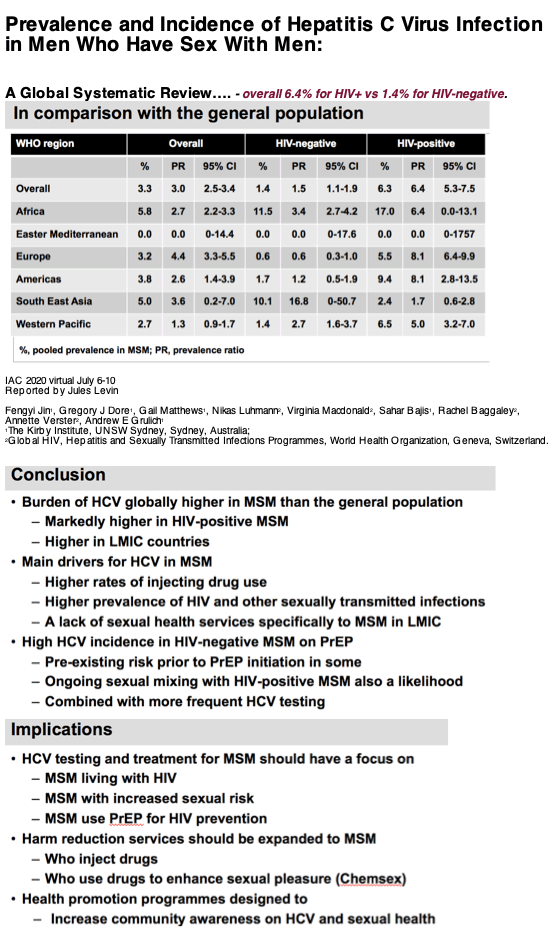
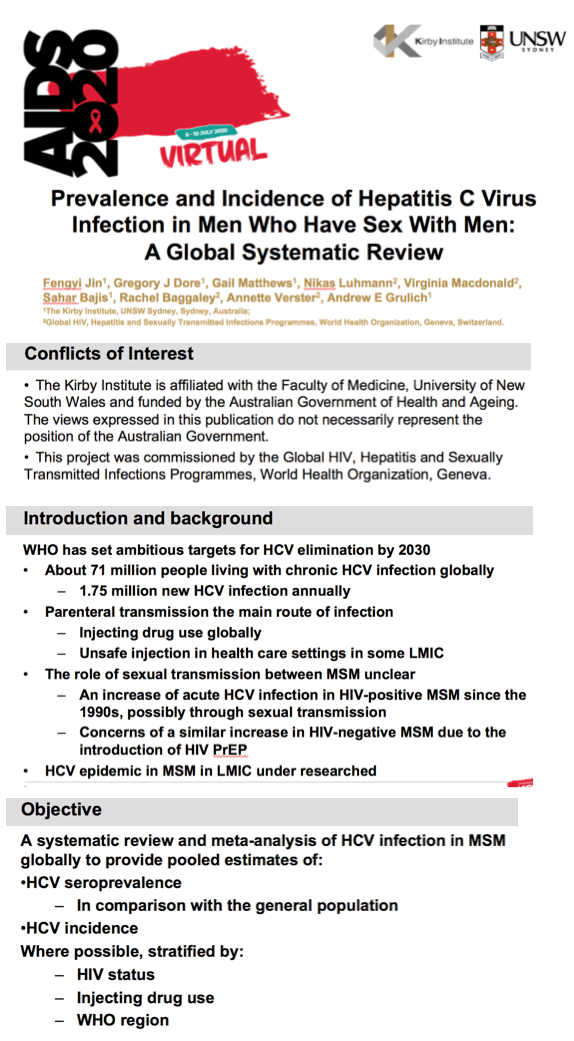
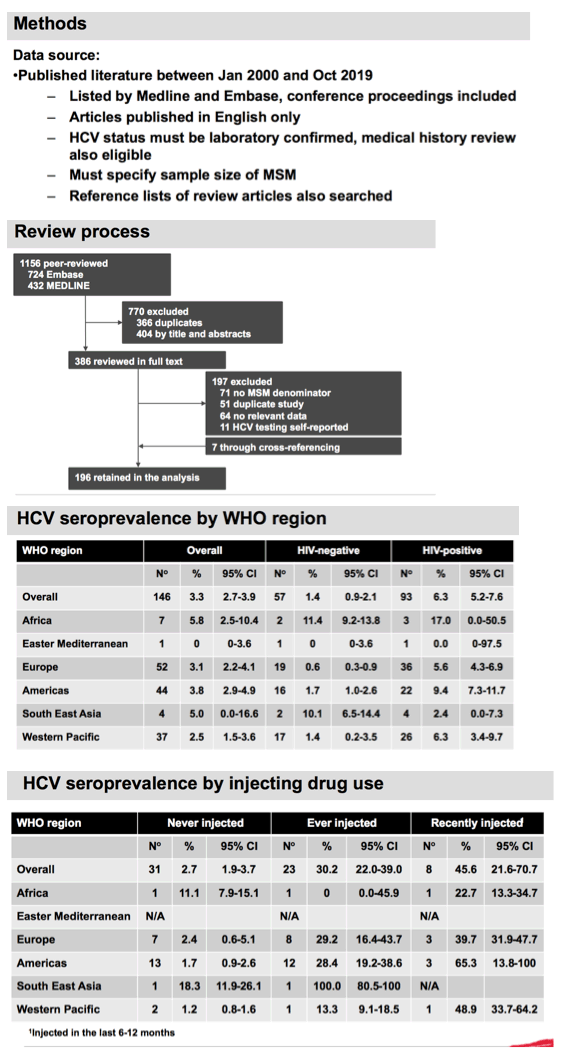
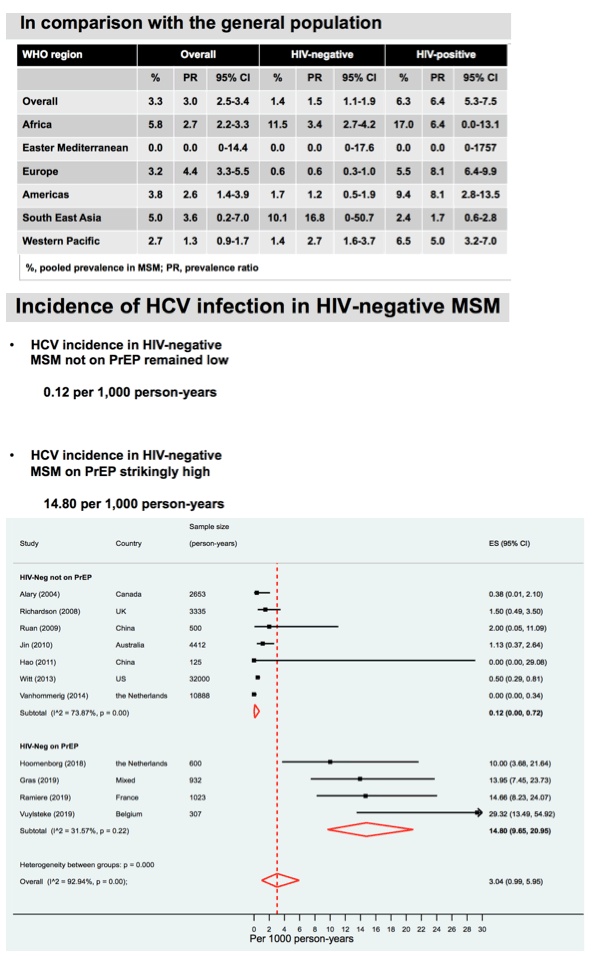
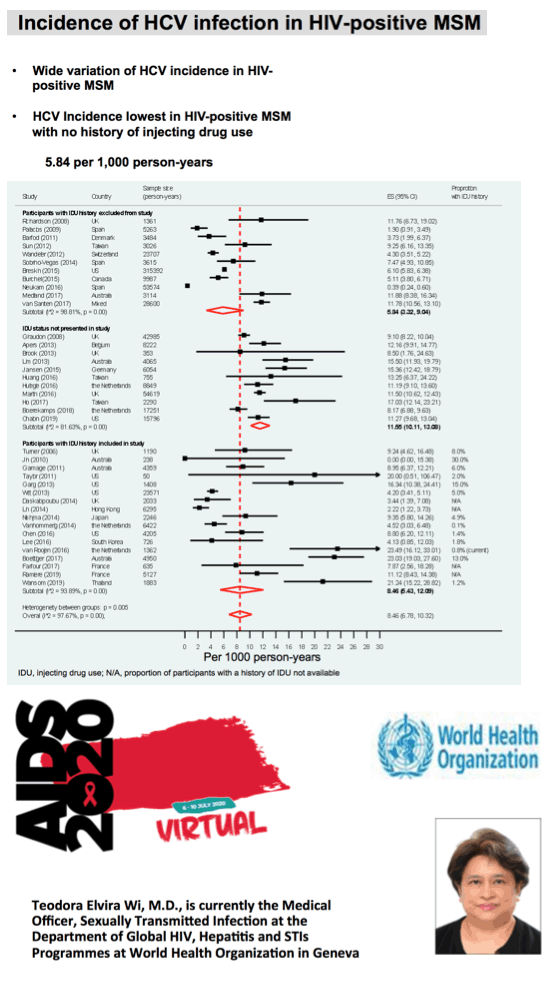
|
| |
|
 |
 |
|
|